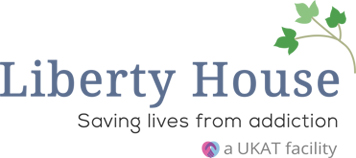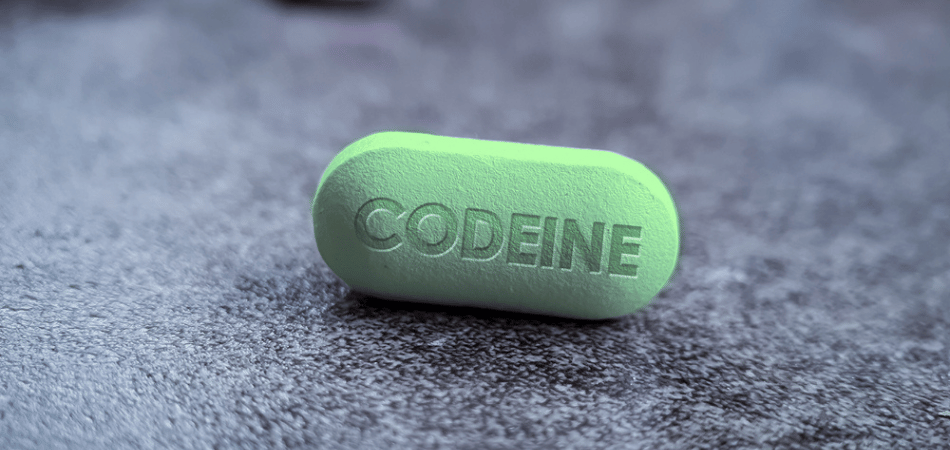Last Updated:
February 17th, 2025
Between 2019-2020, the UK witnessed its most significant surge in codeine-related deaths on record. While there has been a gradual decline since then, the current data (from 2022) still indicates figures surpassing those of the entire 1990s, 2000s and 2010s. This alarming trend underscores the need for continued action, support and, most importantly, awareness of how to get help for codeine addiction if you find yourself in a tough spot.
- Page Content
- Why is codeine addictive?
- How do some people become addicted to codeine?
- Myth busting- Codeine rehab
- How is codeine addiction treated?
- What happens after I complete codeine rehab?
- What are the next steps?
Why is codeine addictive?
Codeine’s addictive nature can be understood through its interaction with the brain’s reward system and central nervous system. By binding to opioid receptors, codeine releases dopamine, enabling you to experience feelings of pleasure. Codeine also affects the nervous system by blocking pain signals to the rest of the body. These two processes create a sense of euphoria and stop any pain you may be experiencing.
As time goes on, the brain can become less responsive to codeine’s effects, resulting in the development of tolerance. It’s not uncommon for people to escalate their dosage to achieve the same pleasurable and pain-reducing effects, which can increase the risk of dependence. Dependence arises when the body becomes accustomed to the presence of the drug, and when not using it, individuals may encounter withdrawal symptoms.
Withdrawal symptoms can be distressing, encompassing anxiety, restlessness, nausea, muscle aches and intense cravings for codeine. The discomfort associated with withdrawal can be a powerful incentive to continue using codeine to evade these unpleasant codeine addiction symptoms.
How do some people become addicted to codeine?
Public perception of addiction is evolving as people recognise that not all cases stem from recreational abuse. Some still unfairly blame those struggling, but there’s a growing understanding that addiction has complex causes beyond personal choices.
Below, we take a look at potential routes to codeine addiction, highlighting some of the paths that can lead to it:
A way to manage chronic pain
You might find yourself dependent on codeine due to chronic pain that has significantly impacted your quality of life. Often, you were initially prescribed codeine for legitimate medical reasons. Over time, as your pain persists or worsens, you may inadvertently develop a dependence on the medication, seeking relief from your suffering. It is important to remember that this path to addiction is not a matter of choice but rather a consequence of a genuine health struggle.
A lack of awareness
Another common route to codeine addiction is the lack of awareness regarding the potential dangers associated with long-term use. You might not fully understand the addictive nature of codeine or the risks involved, especially when it’s used beyond the recommended duration. This lack of knowledge can lead you down a dangerous path, as you may unknowingly become dependent on the drug without realising the implications.
Communication breakdown between doctors and patients
In some cases, codeine addiction can occur due to miscommunication between you and your healthcare providers. Doctors play a crucial role in ensuring the safe use of medications, but misunderstandings or inadequate explanations about the risks and proper usage of codeine can result in unintended dependency. Both you and your healthcare professionals need to have open and honest conversations to prevent such situations.
A means to self-medicate
It could be that you are struggling with depression or anxiety and may turn to codeine as a means of self-medication to alleviate your emotional distress. Without proper guidance or access to mental health resources, you may have resorted to self-prescribing codeine.
The accessibility of codeine through the black market or other illicit sources may further facilitate this behaviour, as it provides a readily available means of coping with mental health issues.
However, this self-medication can lead to unintended consequences, including the development of a codeine addiction, exacerbation of underlying mental health conditions and increased risk of codeine abuse or codeine misuse.
No matter how your journey into addiction began, be aware that there are paths that lead to codeine addiction recovery. The crucial next step for you is to seek out professional help, and in the following sections, we take a closer look at how codeine addiction is treated in treatment centres that specialise in opioid addictions.
Myth busting- Codeine rehab
Getting caught up in rumours or media depictions of rehabilitation facilities can lead to misconceptions and stigma surrounding the process of seeking help for addiction or mental health issues. While it’s understandable that people may be curious or concerned about what happens in rehab, it’s important to approach these topics with an open mind and seek accurate information rather than relying solely on hearsay or sensationalised portrayals.
Below, we take a look at five common rumours about rehab and provide you with the real facts:
Myth 1: Rehabilitation is only for severe addictions
While codeine addiction can indeed become severe, rehabilitation programmes are available for individuals struggling with varying degrees of dependency. Whether someone is dealing with mild, moderate or severe codeine addiction, rehab can provide tailored treatment plans to address their needs.
Myth 2: Rehabilitation is a quick fix
Recovery from codeine addiction is a gradual process that requires time, effort and ongoing support. While rehab programmes equip individuals with coping mechanisms and strategies to manage cravings and triggers, it’s important to understand that relapses can happen and that long-term commitment is necessary for sustained recovery.
Myth 3: Rehabilitation is only for the rich and famous
There are various options for codeine rehabilitation, including public and non-profit facilities, as well as insurance coverage options. Financial constraints should not deter individuals from seeking help for codeine addiction.
Myth 4: Rehabilitation is a punishment
Codeine rehabilitation should be seen as a supportive and constructive process aimed at helping individuals overcome addiction and improve their quality of life. It’s about providing the necessary resources and guidance to facilitate healing and growth, not punishment.
Myth 5: Rehabilitation guarantees success
While rehab can significantly increase the chances of successful recovery from codeine addiction, there are no guarantees. Success depends on various factors, including the individual’s commitment, the quality of the programme and the presence of a strong support system.
How is codeine addiction treated?
One of the most effective ways to receive treatment for codeine addiction is by seeking help from a specialised treatment centre, like UKAT’s Liberty House, that focuses on codeine or opioid addiction rehabilitation. These centres provide a comprehensive approach to recovery that begins with a safe and monitored detox process followed by comprehensive therapy treatment.
Codeine detox– What can I expect?
When you enter a specialised codeine addiction treatment centre, the first step is typically detox. Codeine withdrawal symptoms can be challenging and uncomfortable, making it essential to have medical professionals available 24/7. These experts can monitor your condition, administer medications if necessary to alleviate codeine addiction symptoms and provide emotional support during this difficult phase.
Their presence ensures that you can safely detox and reduce the physical dependence on codeine in a controlled and supervised environment.
Codeine rehab– What can I expect?
Once you have successfully detoxed and achieved a stable physical state, the next phase of your recovery journey often involves attending codeine rehab programmes. These programmes employ evidence-based psychotherapies such as Cognitive Behavioural Therapy (CBT) and Dialectical Behaviour Therapy (DBT) to delve into the root causes of your addiction.
Codeine addiction can stem from various underlying issues, including trauma, untreated mental health conditions or mood disorders. Therapists and counsellors work with you to identify these factors, develop coping strategies and equip you with the necessary tools to manage cravings and triggers.
Many codeine addiction treatment centres also offer holistic therapies as part of their comprehensive approach. These alternative therapies, such as art therapy and yoga, can be instrumental in helping you address addiction and any underlying issues. They provide a holistic approach to recovery, fostering emotional healing, self-awareness and the development of healthy coping strategies.
What happens after I complete codeine rehab?
Aftercare is a crucial component of the recovery process. Most reputable treatment centres offer aftercare support to ensure that individuals maintain their sobriety and continue to progress in their recovery journey.
After completing the initial treatment programme, you’ll have access to ongoing therapy and support. This aftercare may include group therapy sessions, individual counselling or even continued medical check-ups.
The aim is to provide a safety net that helps you navigate the challenges of returning to daily life while maintaining your newfound sobriety.
What are the next steps?
Are you struggling with codeine addiction? You’re not alone, and there’s hope for a brighter future. UKAT’s rehab centres offer compassionate support and effective treatment tailored to your needs.
Alternatively, if you’re concerned about your codeine usage, reach out to UKAT for a caring check-up and guidance.
You deserve support and understanding on your journey to recovery. Let UKAT be your partner in reclaiming your life from addiction. Contact us now – we’re here to help you every step of the way.









